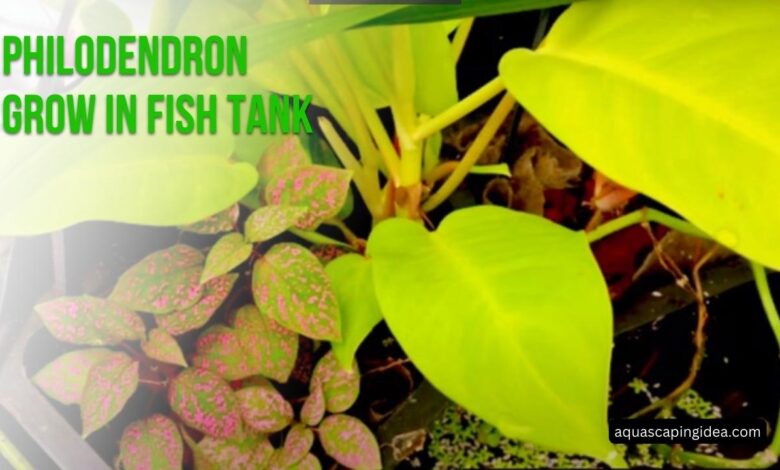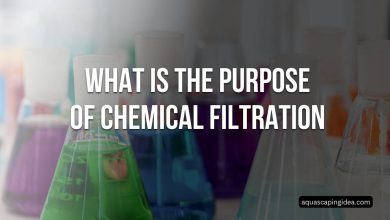Can Philodendron grow in fish tanks? You need to Know

Growing vibrant philodendron plants is an excellent way to add a splash of the tropics to any indoor space. With large, glossy leaves in vibrant shades of green or even variegated colors, they perfectly complement the bright colors and constant motion of fish tanks. But is it possible to grow these popular houseplants directly inside your freshwater or saltwater aquarium? Let’s dive deeper to find out.
The Benefits of Aquaponics
Combining aquaculture (fish farming) and hydroponics (growing plants without soil) into one integrated system is known as “aquaponics.” This symbiotic environment allows fish waste to act as an organic plant food while the plants help filter and purify the water for the fish. Aquaponic systems come in many shapes and sizes, from large commercial operations to small-scale home set-ups.
Can Philodendron Grow in Your Fish Tank?
Growing philodendrons directly in a fish tank creates a simple type of aquaponics environment. The potential benefits include:
- Natural fertilizer for the plants from fish waste products
- Additional filtration for cleaner, healthier water
- An enhanced tank ecosystem that feels more naturalistic
- Added beauty and visual interest
Key Factors for Success
However, dropping a philodendron stem directly into your fish tank water does not guarantee success. Several key factors determine whether a philodendron houseplant will thrive or fail growing hydroponically in an aquarium environment:
Light Requirements
- Most philodendrons prefer bright, indirect light or partial sun. Low light tanks may not suffice.
Water Quality
- The water must have a neutral pH without extremes in chemicals or dissolved solids that can “burn” the plant.
Oxygenation & Water Flow
- Philodendron roots need consistent water flow and excellent oxygenation from air pumps for healthy uptake of nutrients.
Fish Stocking Compatibility
- Aggressive tankmates may nip and damage the plant’s sensitive roots before they can establish themselves.
Ideal Positioning
- The plant needs to sit high enough to allow its leaves to grow above the water surface without being fully submerged.
By carefully addressing each of these factors, you can improve the odds of creating a thriving aquatic plant garden merged with your fish population.
Choosing Suitable Philodendron Varieties
The most commonly available philodendron houseplants usually fall into two main categories, climbing/vining varieties and non-climbing types with a more shrub-like growth pattern. Here some top varieties that can work well when rooted into aquarium planters rather than directly into gravel substrates:
Climbing/Vining Varieties
- Heartleaf Philodendron
- Lacy Tree Philodendron
- Brasil Philodendron
Non-Climbing Varieties
- Congo Rojo Philodendron
- Prince of Orange Philodendron
- Micans Velvet-leaf Philodendron
The climbing types can then vine gracefully along the tank walls and corners while the sturdy shrub varieties sit like aquatic bushes amongst driftwood, rocks, and other aquascaping elements.
Aquarium Set-Up Instructions
If you want to tackle growing philodendron plants inside your fish tank, follow this step-by-step guide for set-up success:
Supplies Needed
- Gravel substrate 5-10mm diameter is optimal
- Aquarium safe plant fertilizer
- Aquaplanters, floaters, or mesh to contain roots
Select Tank Location
Choose a spot with suitable lighting, preferably bright indirect natural lighting. Artificial grow lights can also supply adequate philodendron lighting requirements.
Install Substrate
First add a 2-4 inch base layer of gravel substrate optimized for live aquarium plants. Slope higher in back and lower in front.
Cycle Tank
Before adding fish or plants, the brand new tank water needs to cycle for 2-8 weeks to build up beneficial bacteria that convert fish waste (ammonia) into less toxic nitrates. Test water parameters frequently and only add fish/plants after ammonia and nitrites show 0ppm while pH stays ideal between 6.8-7.5. Perform regular partial water changes of 25% per week once stocked to control nitrate levels under 40ppm.
Add Air Pump
Install an air pump with air stone to greatly improve oxygenation and water circulation which is critical for lush plant growth.
Control Lighting
Use an adjustable timer to set the day/night photoperiods automatically providing 8-12 hours of daily light tailored to philodendron’s needs. Start conservatively with lower photoperiods and intensity, then increase to find the optimal balance between encouraging plant growth without promoting excess algae. Control intensity with height adjustments.
Select & Plant Philodendron
Choose smaller juvenile plants or cuttings that establish quicker submerged than large potted specimens. Gently untangle & rinse roots before planting in aquaplanters, anchoring with aquarium glue or putty. Ensure the crown sits above the water line so leaves can grow emerged while the roots soak up nutrients underwater.
Introduce Fish
Stock fish suited to similar warm tropical temperatures that philodendrons prefer, around 72-80°F. Start conservatively with just 1-2 small fish initially. Bottom feeders that sift through the gravel may uproot newly planted cuttings. Hardy community fish like guppies, platies, tetras & barbs make excellent stable tankmates. Monitor ammonia levels and delay further fish additions if rising.
Fertilize Routinely
Use aquatic plant fertilizers according to label directions to maintain nutrient levels since natural waste in lower biovolume tanks may be insufficient alone. Alternate between liquid fertilizers added to the water column and time-release root tabs inserted deep near each plant’s roots for best growth and to avoid algae outbreaks.
Caring for Philodendrons in Tanks
Achieving success keeping philodendron houseplants growing hydroponically submerged requires some extra care and plant husbandry. Follow these tips:
- Prune aggressively to limit size and promote bushiness
- Trim back leaves yellowing from lack of nutrients
- Wipe leaves to remove dried mineral deposits
- Mist emergent foliage regularly with soft (RO/distilled) water
- Monitor pH and adjust gradually if moving too high (>7.5) or too low (<6.5)
- Perform extra partial water changes anytime ammonia or nitrites spike to help control levels while the beneficial bacteria establish and to limit risks of root burns
By taking a bit of extra care with tank maintenance, your philodendrons should thrive alongside your fish for years of enjoyment!
Frequently Asked Questions
Can I grow pothos instead of philodendron in my tank?
Yes, pothos and philodendrons have very similar care and can grow well in aquarium environments. Some aquarists even alternate both in the same tank for added diversity!
What about aroids like anthuriums or monsteras?
While less common and slower growing, many aroids can also adapt to aquarium life. Ensure they get very bright light and plant in floating planters to keep their crown & leaves emerged. Monitor for signs of nutrient deficiencies and fertilize regularly.
Do I need to add CO2 into the tank water?
Adding CO2 is not essential but can benefit plants, especially in deeper tanks or those with higher light driving faster philodendron growth. Use the lowest initial levels with a drop checker to avoid dangerously lowering pH too drastically. Ramp levels up slowly as the plants acclimate.
Can I grow these plants in saltwater reef tanks?
Saltwater is generally not well suited for philodendrons which prefer neutral freshwater conditions. However, pothos and other aroids have better salt tolerance. Position planters high in strong water flow areas for best results in marine tanks to avoid salts building up around roots. Monitor parameters closely.
What fish species tend to disrupt newly planted cuttings?
Bottom feeding fish like plecostomus, cory catfish and ghost shrimp that sift constantly through the substrate gravel may loosen and uproot newly planted philodendron cuttings before the tender white roots establish. Adding cuttings to floating planters prevents this disruption until the roots anchor firmly.
Conclusion
Bring the Tropics Home Adding vibrant philodendrons can be a stunning addition transforming ordinary fish tanks into true showpieces, fusing the beauty of the aquascape together with lush foliage. By understanding the light, water chemistry and compatible fish species needed, they can grow into specimen plants merging terrestrial and aquatic realms. If cared for properly, philodendrons can thrive submerged alongside all sorts of popular community fish to bring a welcoming piece of the tropics right into your own home or office.
So give aquarium gardening a try and enjoy this relaxing hobby that neatly brings together the best of both the plant and fish worlds! Time to get those (aquarium) green thumbs going!



One Comment